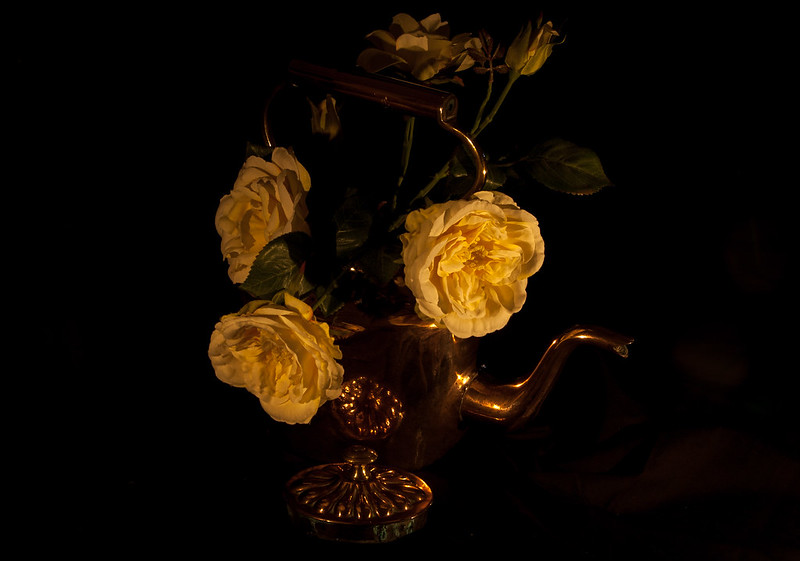Very kind of you to say Paul...
@chrispp - hadn't realised that this thread was a couple of weeks or more old... To be honest, I've been a little preoccupied with other stuff recently, and my only time on TP has been "in an official capacity" (i.e. moderating / fire-fighting / dealing with the usual cockwombles) so I haven't had a proper chance to get into the critique fora and have a look around...
As to your image, well - to be honest, while lots of the Dutch school paintings are quite dark in overall appearance (at least now, after 4-500 years of being in open fired rooms, often lit by candlelight or gas mantles, so the "varnish" of the oilpainting and indeed sometimes the oils themselves have taken on an extra darkening...) most of them tend to have a little more lighting and definition than your first effort... Working with candle-lit subjects is really tough - I'll admit that I often include candles in the shot, but seldom if ever do I actually show them as lit, and I can't honestly remember anything where I've used just the candle-light to light the scene...
As Kodiak states above, pretty much everything in this school of art would have been painted under natural light, basically because that was pretty much the only light that was actually good enough to see to paint the kind of detail that was included in most of the work... That's why most of my stuff tends to have a single light source - usually very directional, often deliberately used to add interest in reflections in glassware or shiny metalware. I'll admit however, most of the time, for consistency, and because when I initially began working on these shots, I was working at night, my lighting tends to be a large softbox (either square or more often rectangular) often gridded to keep the light pretty directional, and often with a large "gobo" attached to the front of hte box, to provide the "panes" of a window... Nothing fancy - i've a couple of big cardboard boxes, with different "window shapes" painted matt black and held on the front of the softbox with clothespegs... Works quite well though - as you can see in the Antique Roemmer in
this picture.
I'll be honest, I find it a fascinating period of art history - especially all the "hidden meanings" that were worked into the pictures - often the pictures were commisioned by the then "nouveau riche" - a bit like modern day Football Players loving their "bling" - having a vastly ostentatious painting (Pronkstilleven) showing expensive items like jewelled cups and vessels, alongside expensive foods on the wall - preferably in the same room that you kept the Jewelled cups on the sideboard

- would be a statement of "look at me, how successful I am." Now, what the people comissioning the painting didn't always appreciate, was that the painters would hide "messages" of a slightly puritanical nature in the painting... basically saying "yep, you're rich, but you can't take it with you..." - so much so, that a whole sub-set of the works became referred to as "
vanitas" paintings...
 Untitled by Chris_Pritchard1, on Flickr
Untitled by Chris_Pritchard1, on Flickr Untitled by Chris_Pritchard1, on Flickr
Untitled by Chris_Pritchard1, on Flickr

 Untitled
Untitled